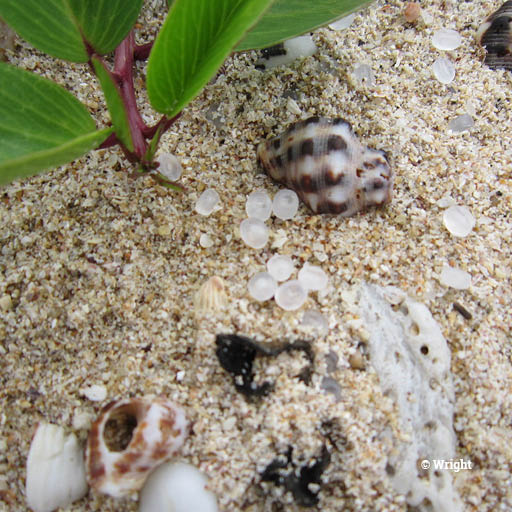Challenges and choices: The Environment Agency and plastic pellet pollution



With the legal responsibility to protect the natural environment of England, The Environment Agency could be doing a lot more to tackle the second largest source of marine microplastic pollution – plastic pellets.
Pellets are the raw material of the entire plastics industry and are melted and moulded into every plastic product in existence.
These lentil-sized beads of plastic are wildlife’s worst nightmare; small enough to be mistaken for food by birds, fish and other animals, they poison them and their environment with concoctions of toxic chemicals.
Up to 167,000 tonnes of pellets leak into the environment every year in the European Union and up to 1,000 tonnes (35 tanker loads) every year in the UK.
Tackling pellet pollution isn’t rocket science – unlike other sources of microplastic pollution that are much trickier to get a handle on, such as synthetic fibres from clothing and tyre dust, stopping pellet pollution is simply a matter of the plastics industry being careful since they leak into the environment through a lack of care during production, storage, and handling.
Pellet pollution is entirely avoidable and the Environment Agency could be doing a lot more to tackle it. For this reason, EIA has remarked on how it should be bolstering its efforts as part of an ongoing public consultation.
The Environment Agency should firstly clarify its position on industry-led initiatives such as Operation Clean Sweep (OCS). It has openly stated that ‘industry action’ is needed to tackle pellet loss, but we can’t just rely on the plastics industry to sort it all out.
The Great Nurdle Hunt showed that 73 per cent of UK beaches had pellet pollution in 2017 and there is now general agreement among industry, NGOs and decision-makers alike that industry initiatives such as OCS are simply not enough to solve the problem.
We need much a much stronger set of measures to end this entirely avoidable form of pollution and the Environment Agency has a responsibility to publicly declare this necessity.
It also states: “We’re also working with biowaste and other operators to reduce the visible plastic contamination in materials and other wastes spread to land.”
 Tackling only visible pollution is the same as only ever cleaning the parts of your house that look really dirty – it doesn’t make much sense. Just as your house gathers dust under the sofa and on dark carpets, pellet pollution exists in sewage sludge, soils and unvisited creeks and coves, where they will likely stay for centuries, slowly polluting the environment like a ticking time bomb.
Tackling only visible pollution is the same as only ever cleaning the parts of your house that look really dirty – it doesn’t make much sense. Just as your house gathers dust under the sofa and on dark carpets, pellet pollution exists in sewage sludge, soils and unvisited creeks and coves, where they will likely stay for centuries, slowly polluting the environment like a ticking time bomb.
We would like to see further commitment from the Environment Agency to deal with the challenge of less visible pellet pollution, which can cause an equal amount of damage.
Furthermore, our partner Fidra is often contacted by frustrated community members who stumble across widescale pellet pollution in their local neighbourhoods. It is not always clear how or where to report incidents and the nature of pellet pollution means that it is often difficult to assign blame to specific companies. However, this is not a reason for lack of action. Citizens deserve clarification on the procedure to be taken once hot spots of pellet pollution are found, including a logical, transparent investigation and the prosecution of regular polluters.
The cogs of change, however, are slowly turning. In Scotland, a steering group is trialling a supply chain approach – identified in an EU report as the best and most cost-effective means to tackle the issue.
Likewise, work has begun on a Publicly Available Specification (PAS) which will allow companies to check compliance with best practices to avoid unnecessary leakage. Here, the Environment Agency has an opportunity to convene with its Scottish counterpart, the Scottish Environmental Protection Agency, to support this work as well as involving itself in the development and promotion of the PAS.
Environment Agency staff should also be rigorously trained in pellet handling best practices to ensure they can reliably recognise poor operational practices and that sites with high risk of leakage are rapidly seen to.
Pellets are the low hanging fruit of addressing microplastic pollution, both in the UK and overseas.
If we can resolve the simplest source of microplastic pollution, then it shows we have a fighting chance to tackle all sources, whatever their origin, and however hard they may seem to overcome.